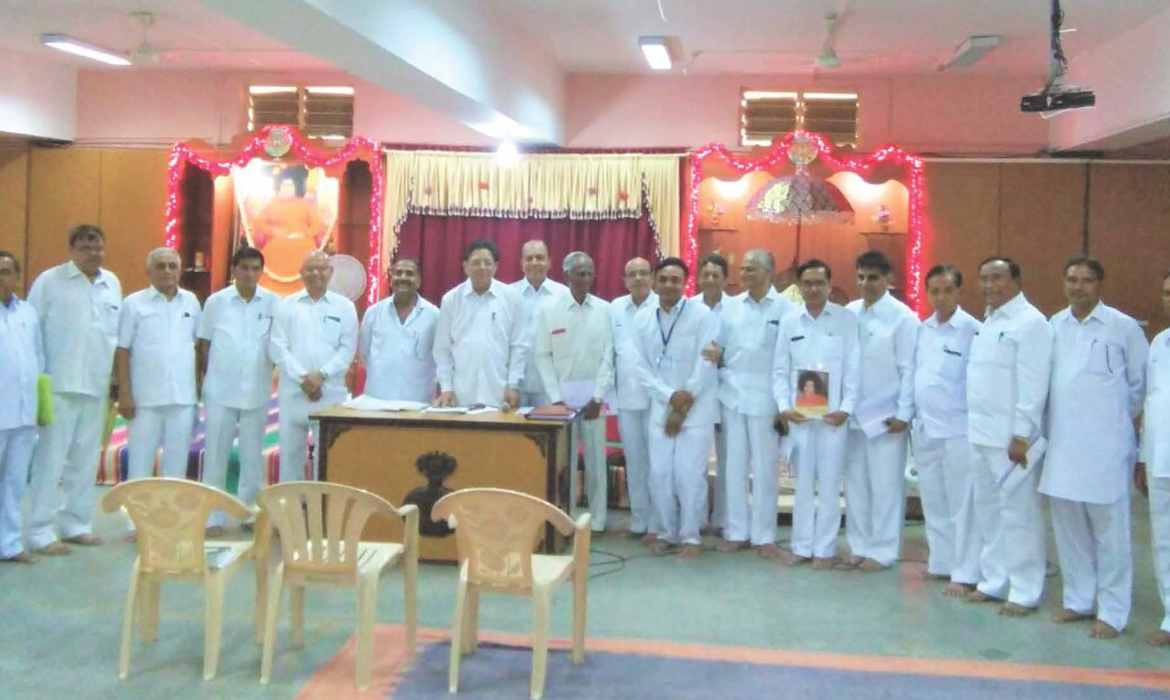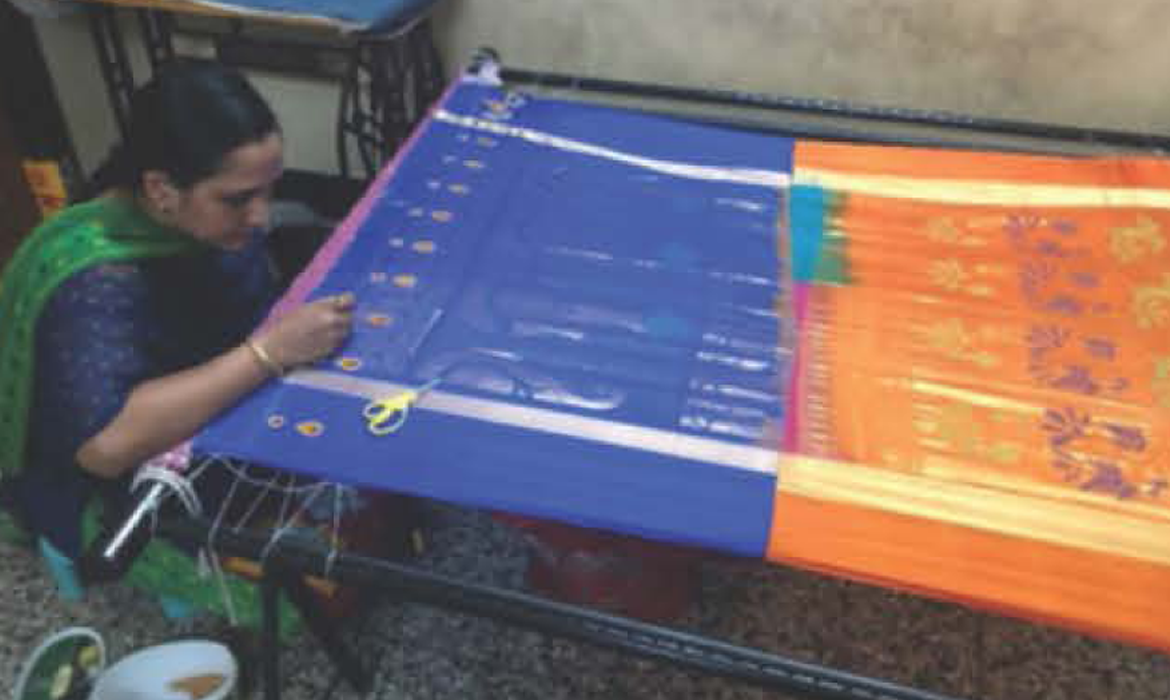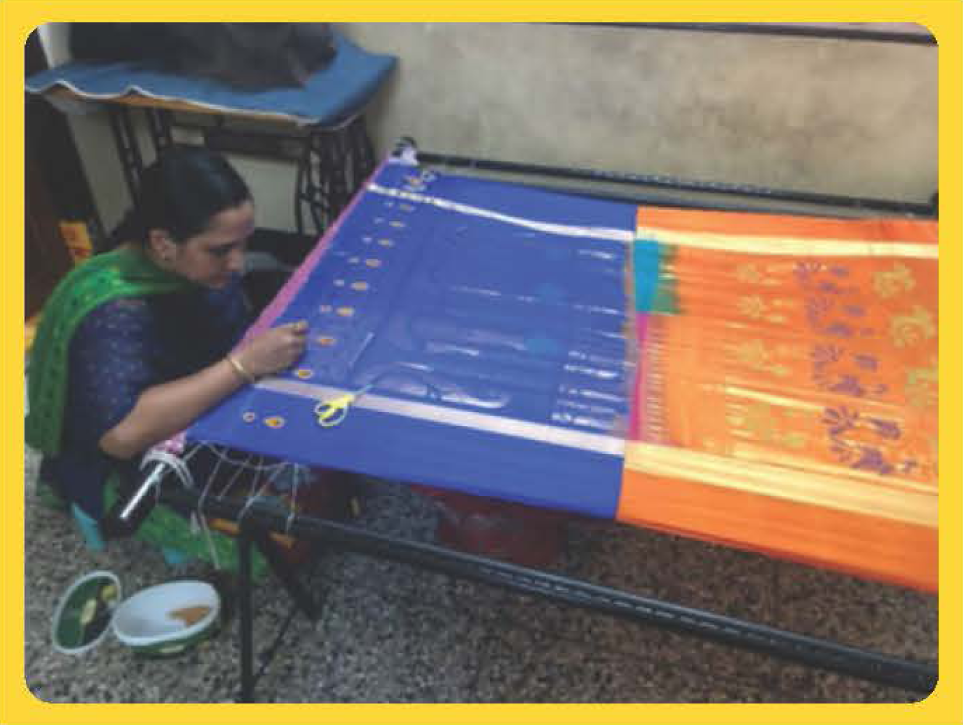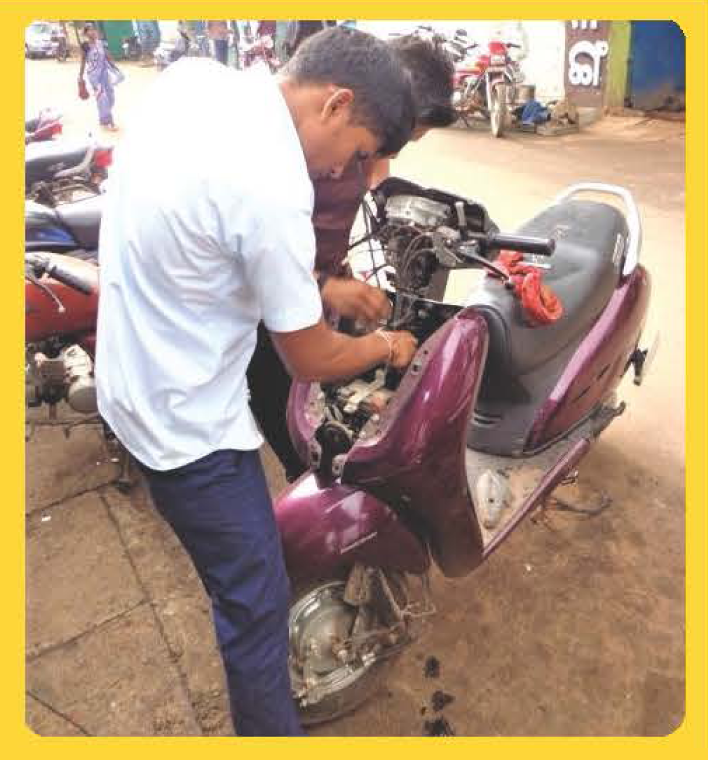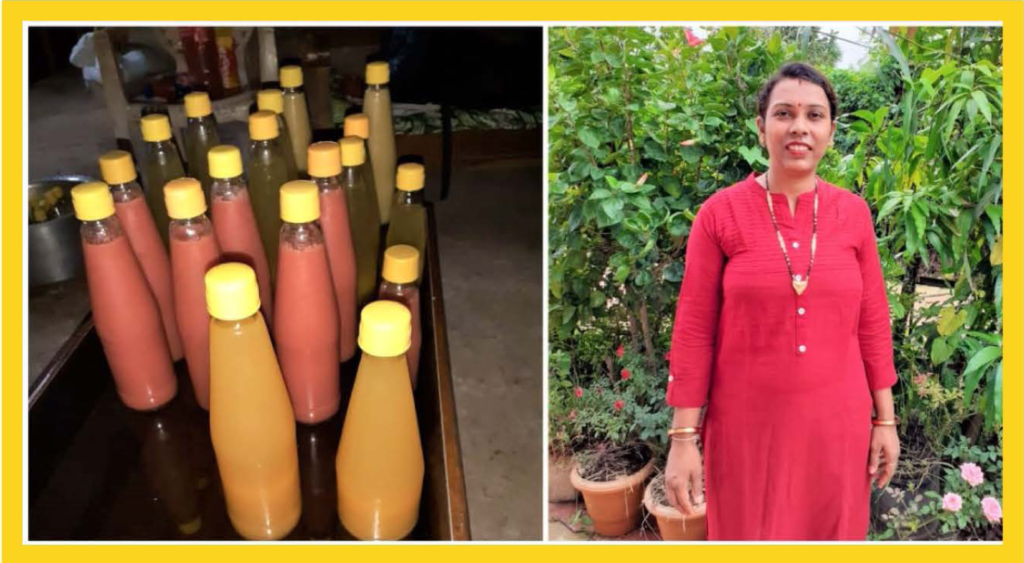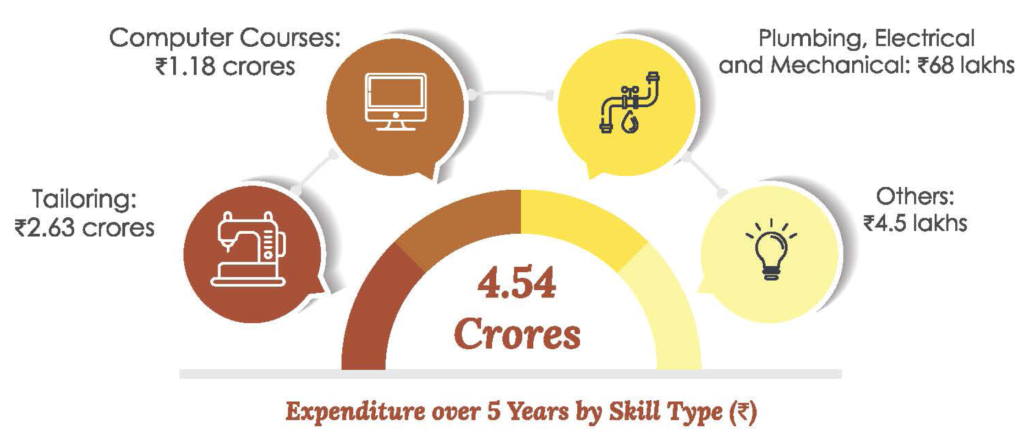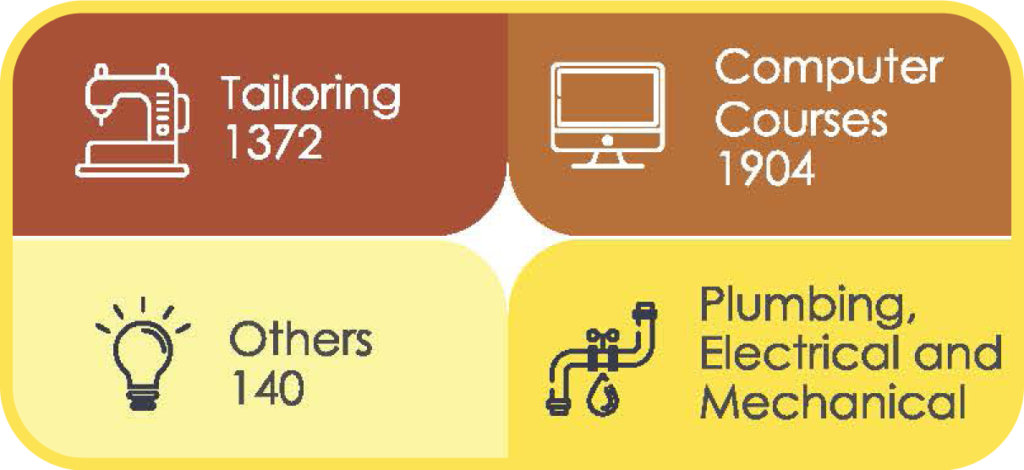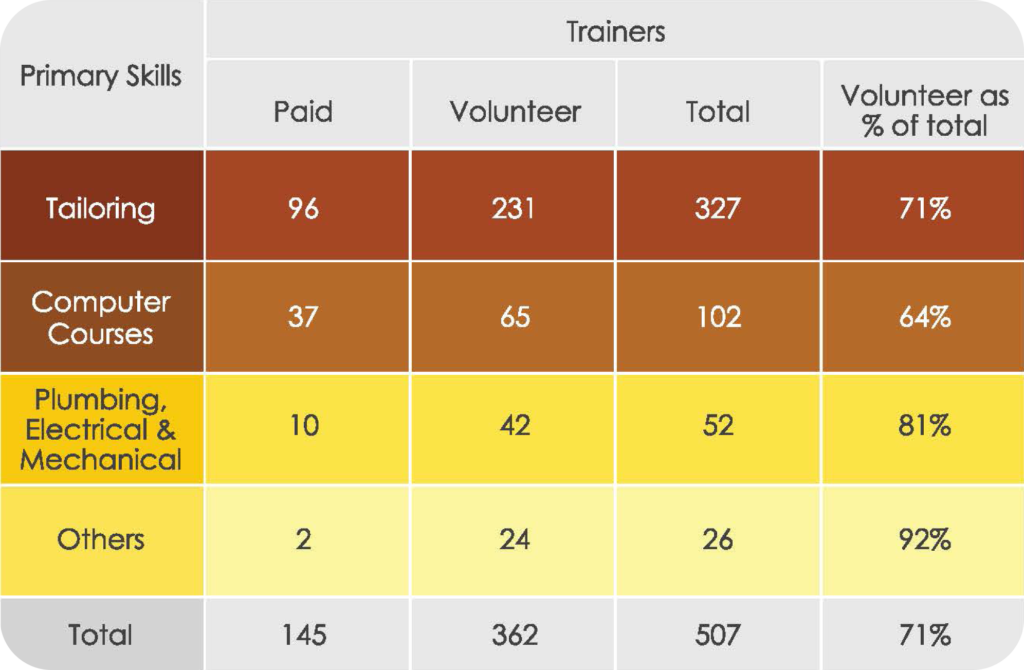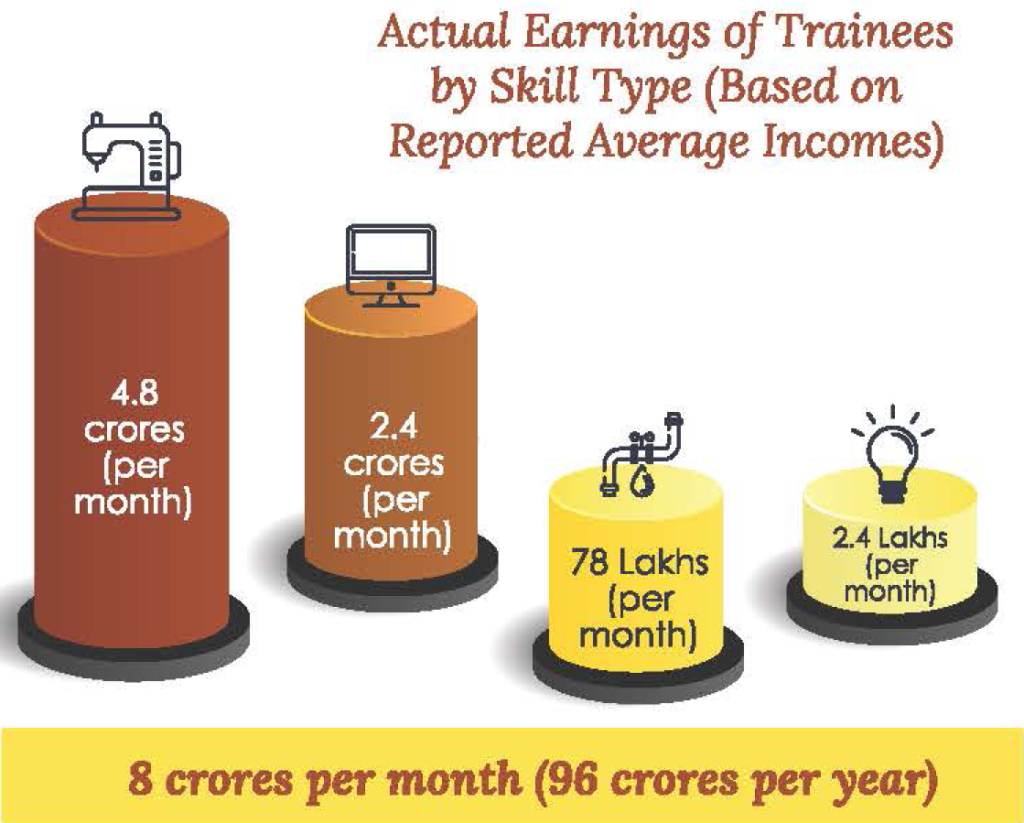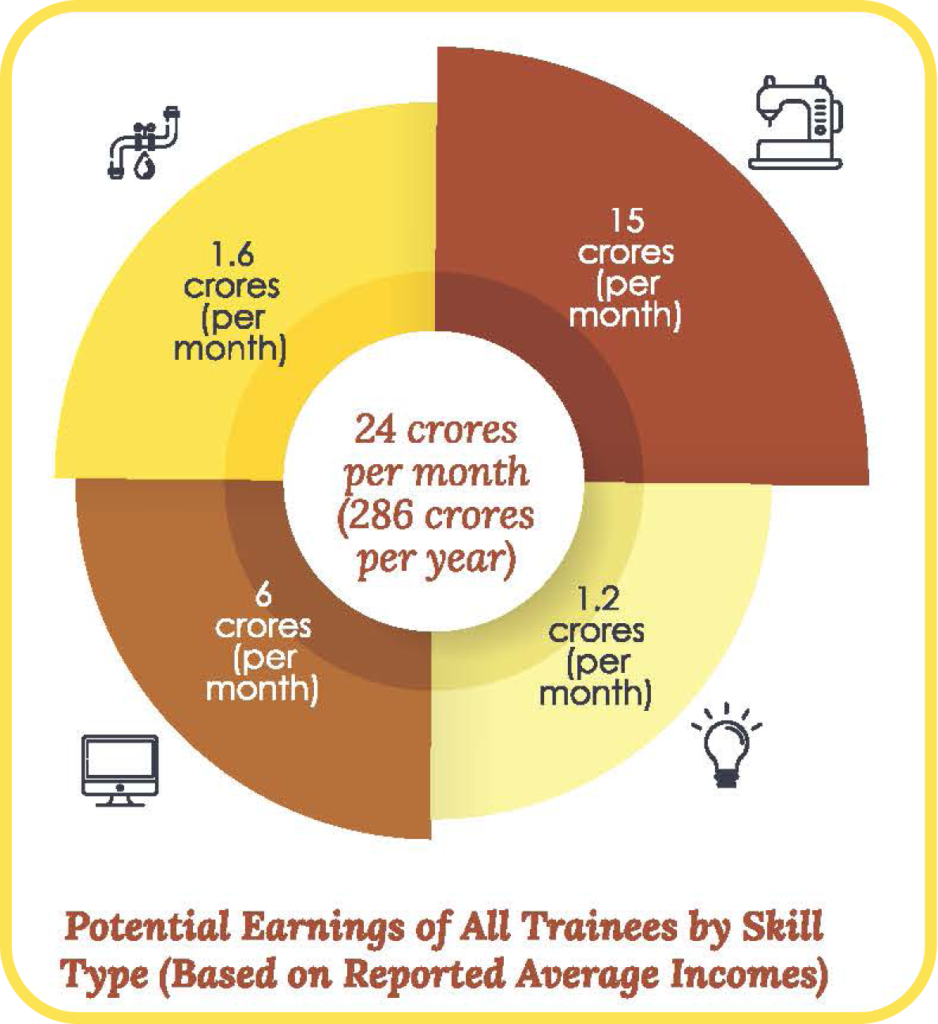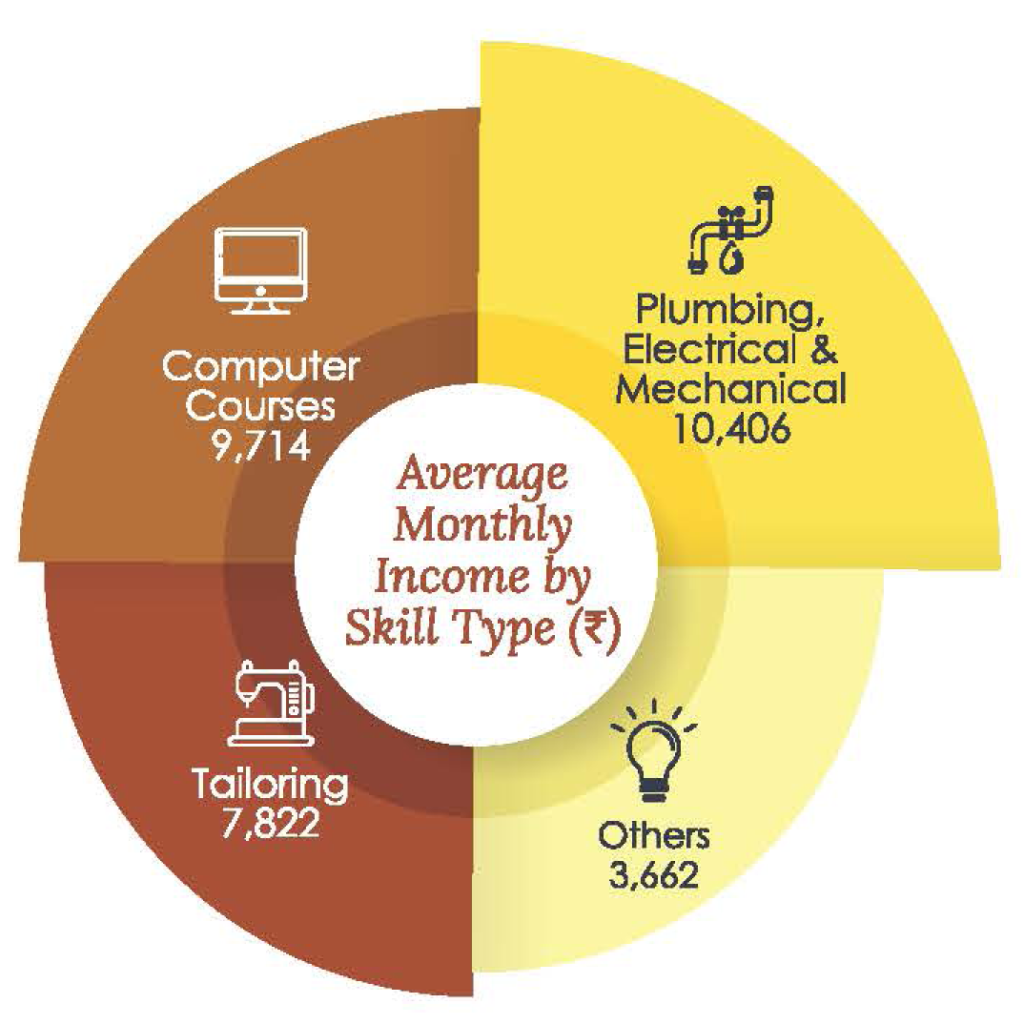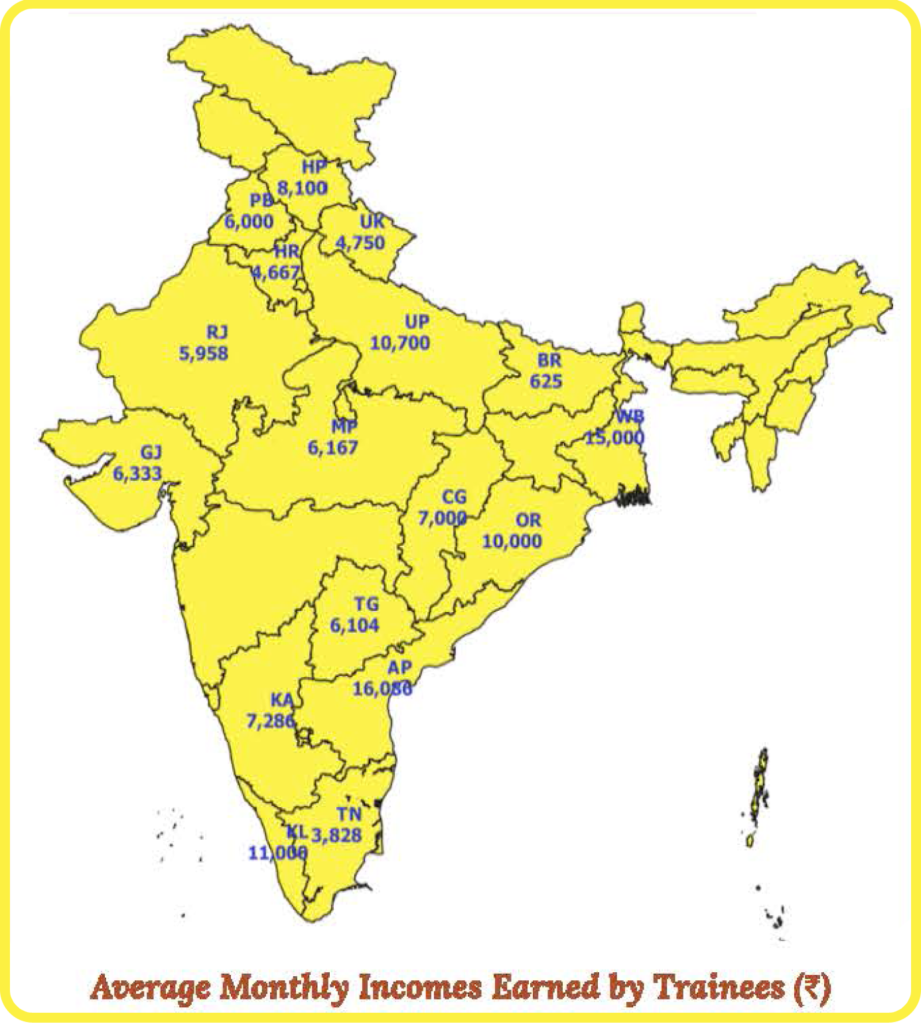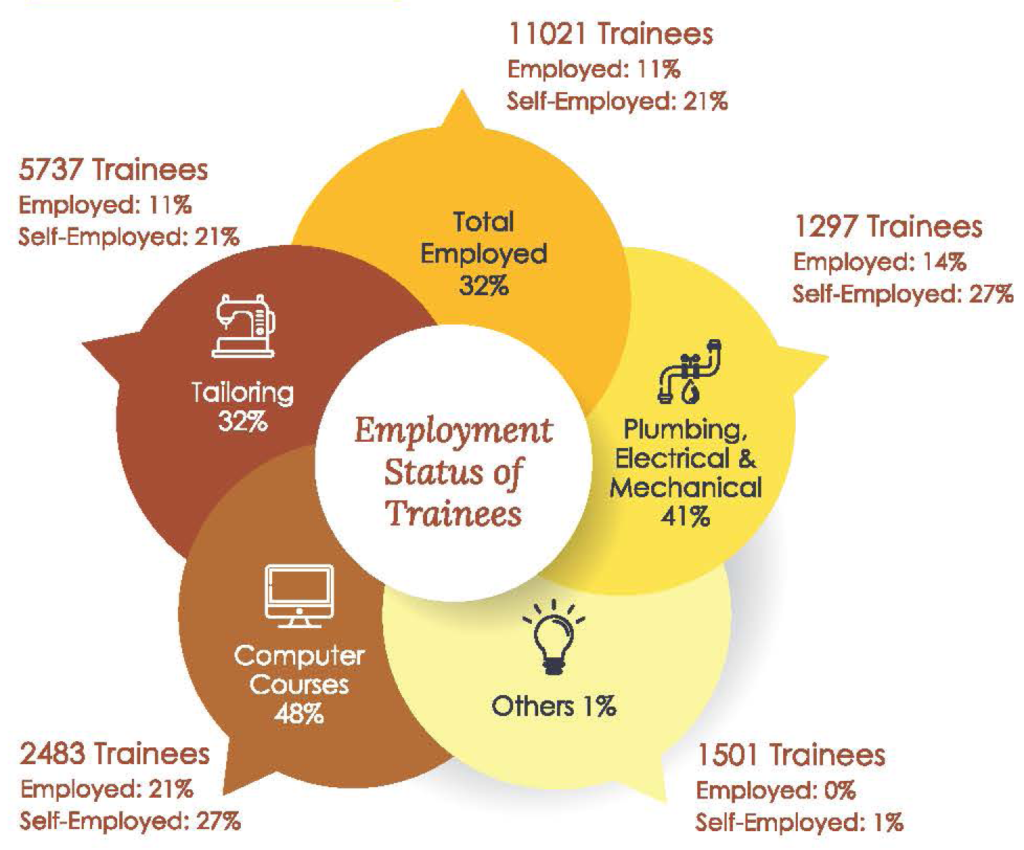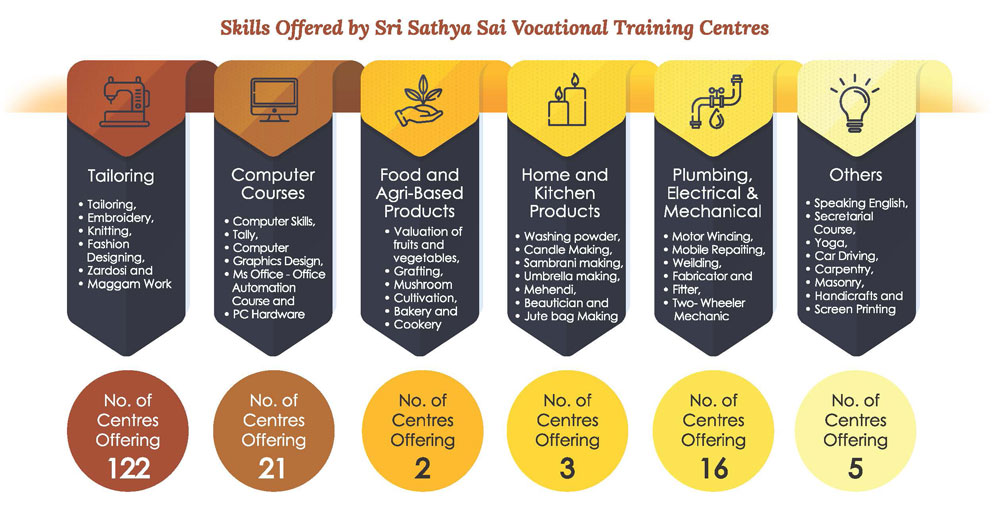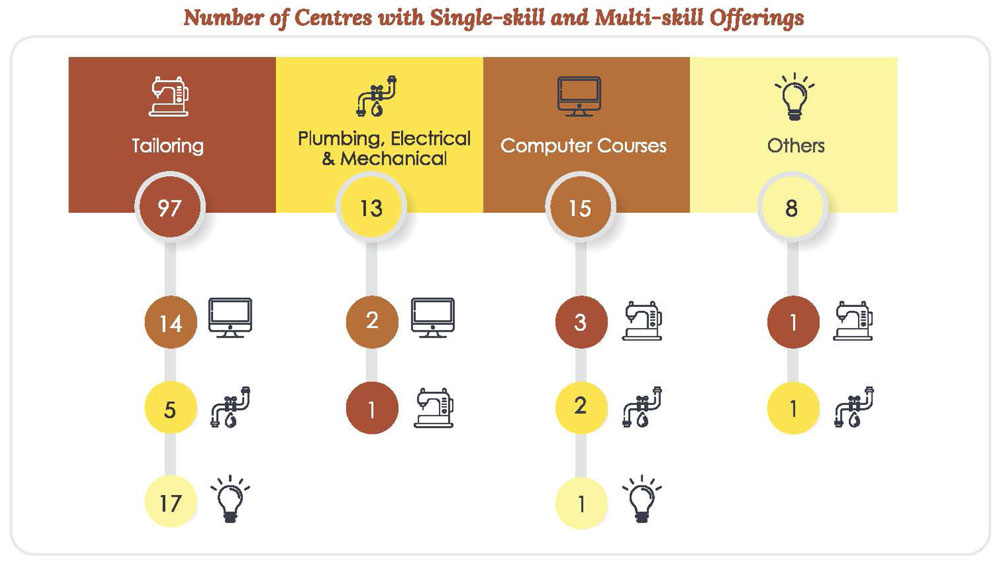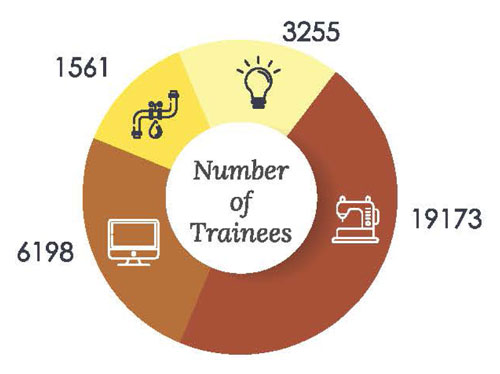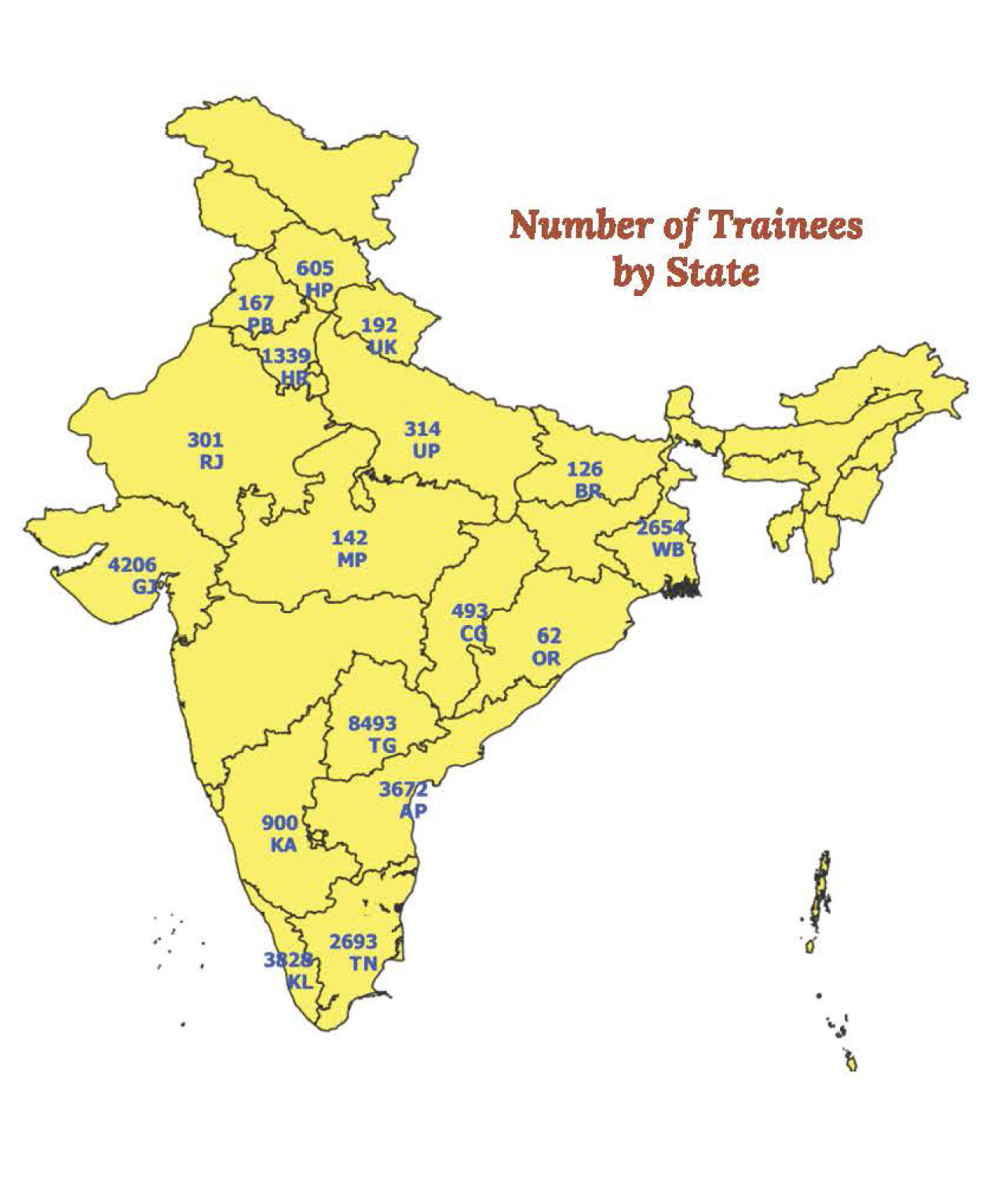December 27, 2021
Trainers
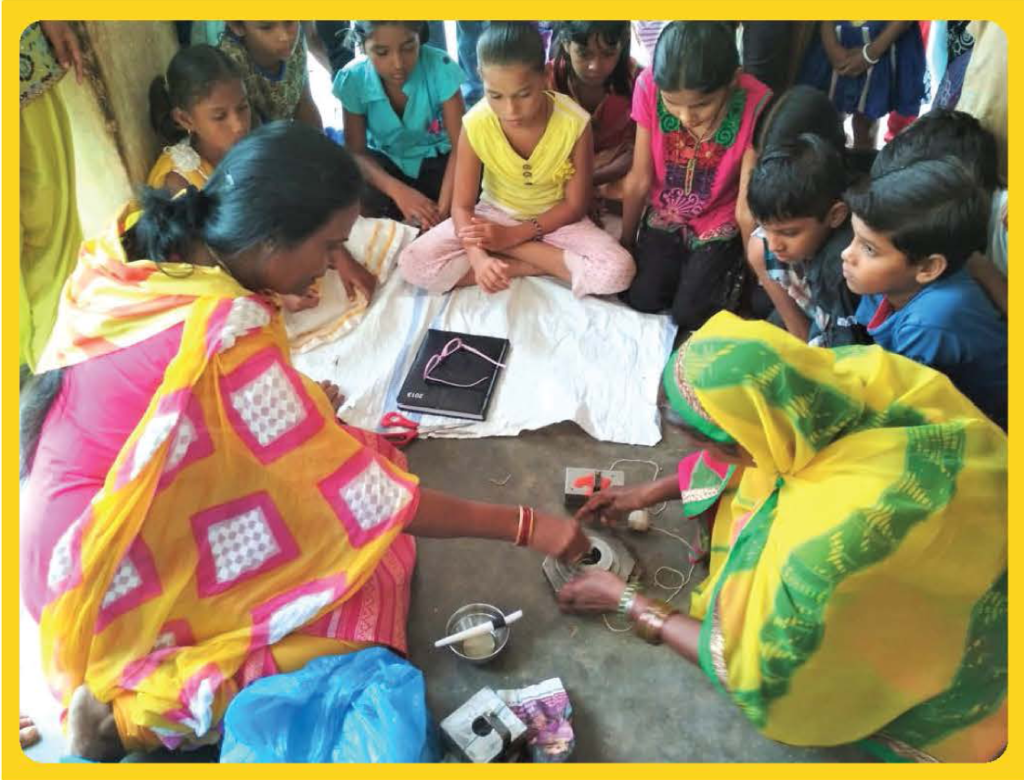
Anjali Pillay, Bhilai, Chhattisgarh
“I believe in self-empowerment for women
so that they can stand on their own in society.
Being a Sai devotee, I work towards creating
this awareness among the people. I
think love with selfless service is modern-day
spirituality,” says Anjali Pillay, who has been
associated with Sri Sathya Sai Vocational
Training Programme from 2017. She is a
Senior Human Resource
Manager at Bhilai
Steel Plant, Steel Authority of India Limited
(SAIL). She has experience in providing training
in Tailoring, Sweet box making, Candle
Making (floating candle), Papad and Pickle Making.
In 2015, she got posted in the CSR department of SAIL and got the chance to do service
through her occupation. Bhilai Steel Plant adopted 21 villages and she was part of the team
which made “self-help groups” of 15-20 number of women who had gone through the training
of sweet box making, candle making, old clothes mattress, tailoring, pickle-papad making,
and marketing. In the past three years she has trained about 700 women.
S. Nagabhushan Rao, Srikakulam, Andhra Pradesh
S. Nagabhushan Roo, an ITI and CTI graduate, has been associated with SSSSO since 1972. He
was the head of the institution of private training centers from 1980s. Apart from the technical
know-how, he knows the nitty-gritty of administration of the training institute. “When I have
passion to serve and share my knowledge, I don’t see any trouble,” he says.
Nagabhushan travels every day
to SSSRVTC Srikakulam, for which
he is the director. He has few faculty
members and a caretaker to
support him. When asked about
the difference between other
RVTCs and SSSRVTCs, he says “We
don’t focus on providing only
skills. We aim to make them better
citizens. The students who join,
participate in morning prayer
activities, Bhajans, and Human
Value classes, which develops
their personality. I see a silent
transformation taking place
along with acquisition of skills”.
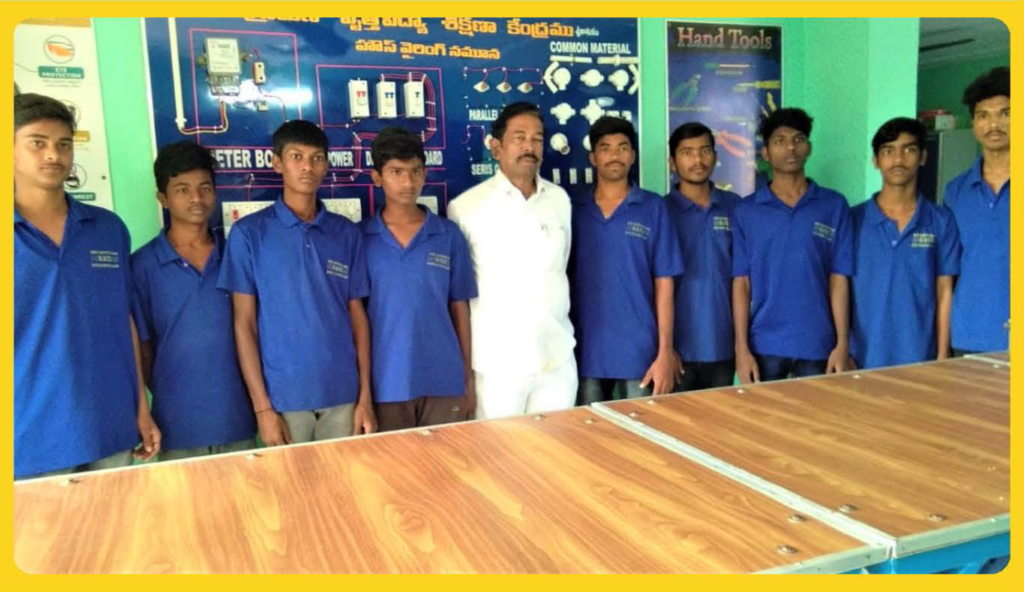
Scaling up
Vocational training programmes are fulfilling an important need for skills among youth in rural
areas and for the unemployed and under-employed youth in urban areas. Scaling up such
programmes will require studying the outcomes from the current initiatives, replicating the
best performing models and, increasing the number of centres and skill offerings that can
serve the youth and help them build long-sustaining careers.
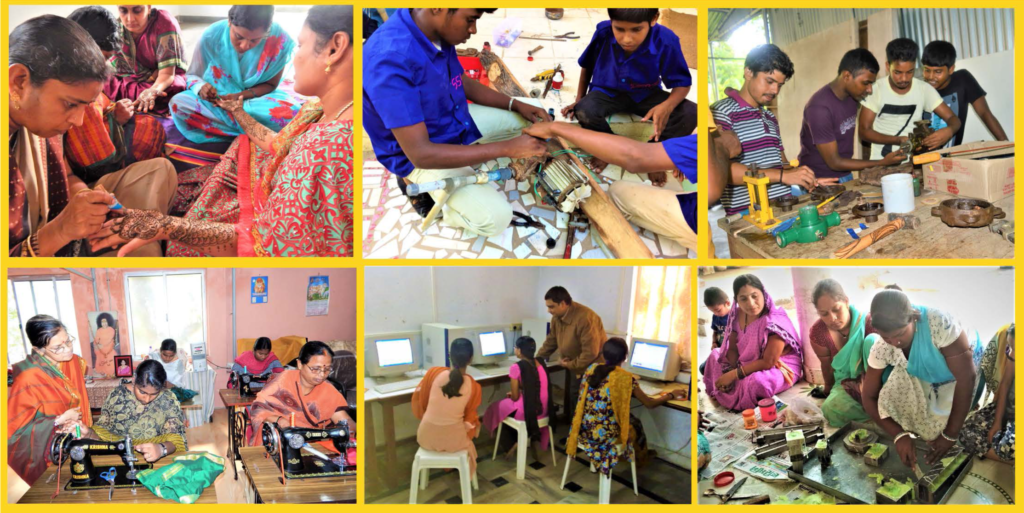
As part of the Vocational Training Mission, SSSSO aims at increasing the number of
trained youth to 1,00,000 over the next five years and also improve on their placement
numbers and monthly wages earned. Potential earnings per year by the 100,000 trained
and employed youth could add ₹1,000 crores (₹ tO billion) per year to the economy if all are
employed or self-employed.
With greater efforts to trace trainee graduates and their employment status, SSSSO
will be able to report more accurately on the actual earning history of the trainees.
This is a challenge flagged by researchers when the outcomes of vocational training
programs in India are discussed. Going forward, SSSSO plans to implement systems
that will improve the tracking of graduated trainees so that their employability is
determined more accurately and widely.
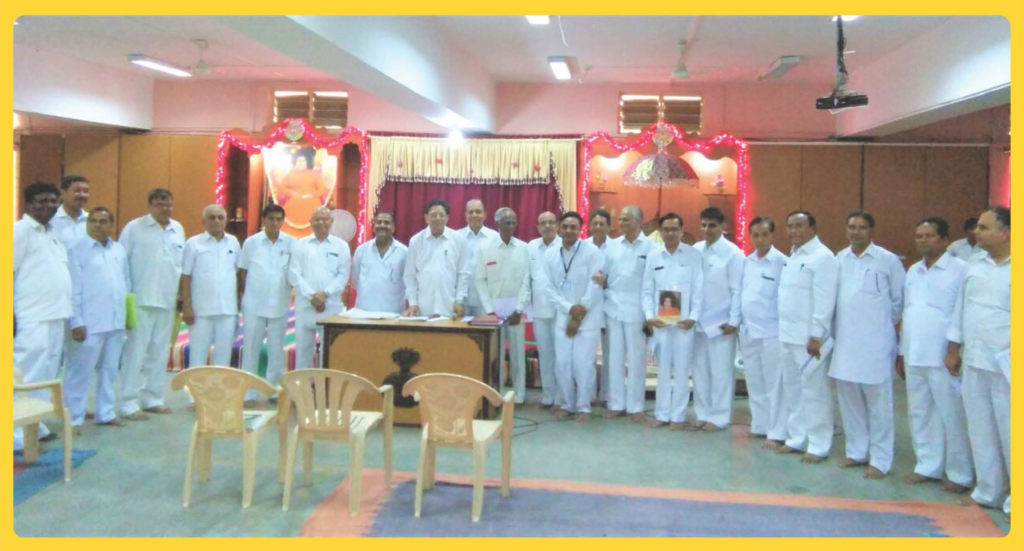
All India Meeting of Vocational Training Coordinators at Prasanthi Nilayam
One of the immediate goals is to build a Management Information System (MIS) that will help
manage the vast amount of data generated across India along scores of indicators that need
to be tracked in order to study its vocational training programmes. Such an MIS will help
streamline data collection and management and, significantly improve the assessment of
outcomes and impact of the vocational training programmes.
Towards the above goals, collaborations with different organizations, support of philanthropists,
CSR support from corporates, and implementation partnerships with organizations
already established in this domain of skilling will be critical. By elaborating on SSSSO’s vocational
training programmes and their experience with various models, the Organisation hopes to
establish the case for a multi-pronged approach to vocational training and skill development
in this decade.






































